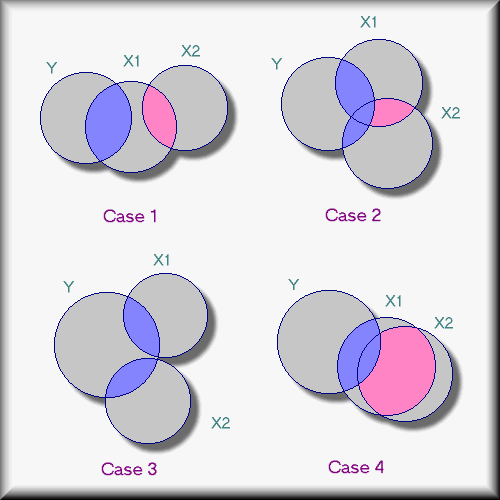
In case 1, X1 and X2 are related; X1 and Y are related, but X2 and Y has no relationship.
For example, the number of hours of study is related to test scores, the frequency of
going to the restroom is related to study (you drink more coffee to stay up), but going to the bathroom
is not related to the test performance.
In case 2, both X1 and X2 contribute to some unique variance explained to Y, but they also have some
common variance explained. For example, drinking and smoking can cause cancer. And many smokers are
also alcoholics.
In case 3, again both X1 and X2 contribute unique variance explained to Y, but X1 and X2 are totally
unrelated (orthogonal). For instance, mathematical intelligence and verbal intelligence could predict
competence in business, but these two types of intelligence has no relationship.
In case 4, although both X1 and X2 could predict Y. The variance explained contributed by X2 has been
covered by X1 because X1 and X2 are too correlated (collinear).
|